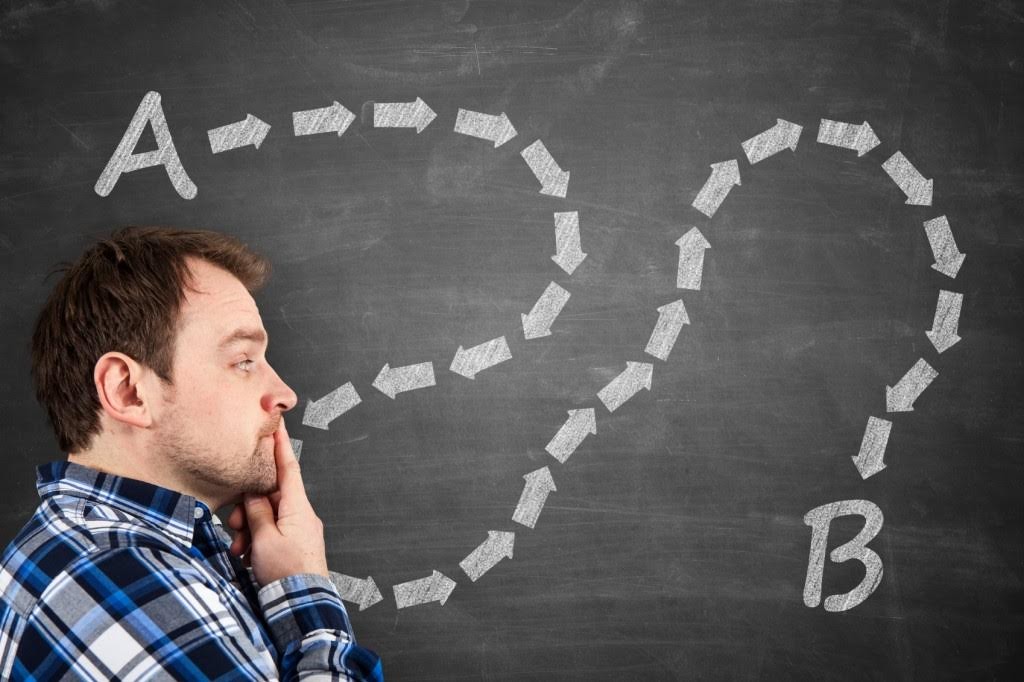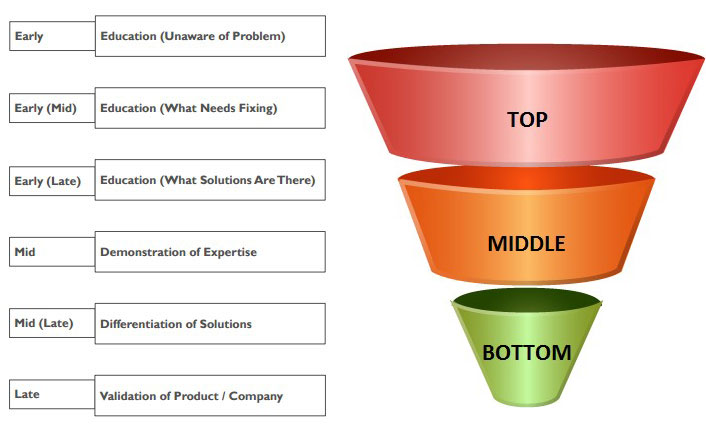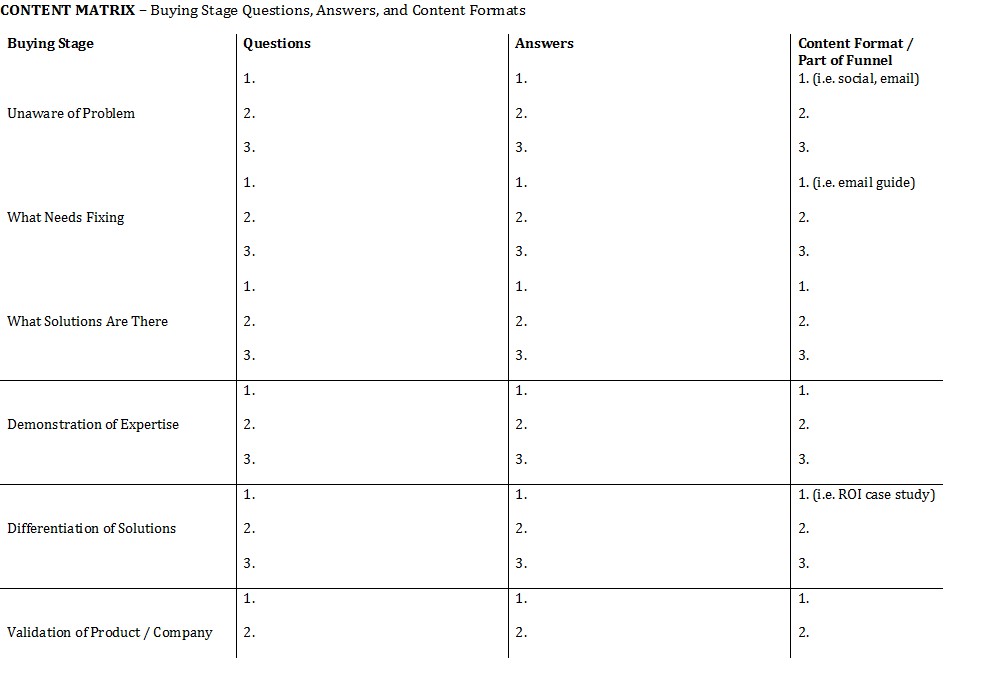 Creating buyer personas should form a critical piece of your digital marketing strategy, and is essential to understanding your clients’ target buyers; however, it is merely part of the process you and your organization must implement to really get inside the heads of your clients’ customers.
Creating buyer personas should form a critical piece of your digital marketing strategy, and is essential to understanding your clients’ target buyers; however, it is merely part of the process you and your organization must implement to really get inside the heads of your clients’ customers.
The other critical part is understanding a buyer’s journey through the various stages of your client’s sales process.
What is customer journey mapping?
Customer journey mapping is simply diagramming the steps that a real or hypothetical customer makes as they engage a company at different touchpoints before ultimately deciding to buy a product or service.
Mapping the customer journey involves utilizing the buyer personas you’ve created for a client. It means identifying the questions that one of your hypothetical customers has about a client’s product or service as they move through the traditional sales funnel.
Why should you spend time mapping the customer journey?
Yogi Berra, one of Major League Baseball’s most famous icons, famously stated “If you don’t know where you’re going, you might not get there.” While this sounds like double-speak jibberish on the first read, it actually makes a lot of sense the more you think about it.
Having a clear vision of where you want to go, or having a map of your customer’s buying journey in this case, ensures that they end up exactly where you want them to be.
Taking the time to map the journeys that your different hypothetical customers make as they progress toward becoming loyal customers will ultimately help you enhance your overall digital marketing strategy. This includes improving the quality of your content, using the best methods to promote the content, and targeting the right places and platforms for promoting your content.
The most important reason to map the journeys of your clients’ customers, however, is to ensure that you are putting the customer at the center of your marketing strategy. What I mean by this is that you are taking their feelings, their concerns, and their problems into account more than you ever have before.
How do you create a customer journey map?
First of all, instead of creating a giant, one-size-fits-all customer journey map, plan to map the unique customer journey for each of the buyer personas you’ve put together for a client. Thinking in extremely broad terms about a client’s customers and campaign strategy does not bode well for digital marketers or digital marketing as a whole.
Second, there is no “right way” of creating a customer journey map; however, there are some great strategies that you should consider as you and your organization make plans to move towards this framework for marketing in the digital arena.
Here is a model that has proved extremely useful and that can add tremendous value to you and your organization:

- Choose a Buyer Persona – Always think about one hypothetical customer at a time when you begin the process of journey mapping. This will allow you and your team to focus more intently on that customer, their needs, and solving their problems.
- Identify the Stages in the Buyer Journey – Once you have chosen a buyer persona to work with, you want to use both analytical and anecdotal research to identify the buying stages in which the hypothetical customer would interact with your client’s company. Not every persona you create journey maps for will engage your client’s organization at every buying stage or touchpoint; based on your research, they may enter early, mid, or late in the game. For those of you who are new to “buying stages,” you can think of these in terms of the traditional sales funnel. Buyers in the early stages are prospects at the top of the sales funnel, buyers at the mid-stage are prospects in the middle of the funnel, and so on. You can see a nice side-by-side illustration of these below.
- Develop a Q & A Matrix – After you’ve identified the buying stages in which a buyer persona engages your client’s company, you can develop a Q & A Content Matrix (see below). Using the matrix, you and your team should work to identify as many questions that the hypothetical customer would have at each buying stage or touchpoint. Knowing ultimately, that the nature of the questions will evolve as the customer progresses on their journey. Once you have developed the questions, you can spend the time to think about answers that appropriately address the customer’s issues or concerns in a way that your client’s product/service can provide the best solution. You might even decide to identify what types or forms of content might have the strongest impact on the customer at each buying stage.

- Give Your Map a Makeover – Once you’ve got a fully developed matrix, you’re nearly finished mapping the customer journey. The only thing left to do is make your map look really, really cool with a graphic design makeover. After all, a map should be visually appealing. There are several ways to design a customer journey map, and the way it looks is ultimately up to you and/or your clients.
It is seriously time for digital marketers to start thinking about buyer personas and customer journey mapping as two sides of a coin that are inseparable, and that belong in your pocket with the other tools you use to promote products and services in the digital space. As you work to develop journey maps for the buyer personas you create for your client’s customers, you will gain insights into customer thinking, concerns, and more that you never imagined was possible.
Read the complete series:
Much success,



